Showing 41–50 of 358 results

This book stresses the persistence of cultural diversity despite the homogenizing pressure of globalization, but argue that this diversity need not lead to conflict and may be our greatest resource. It contains essays on the idea of India and the American dream, as well as discussing broader questions raised by the meeting of different ways of knowing and being in an enigmatic world.
Our planet seems to be getting smaller and smaller. We now interact all the time with our once-distant neighbours around the globe. Yet our cultures remain almost as different as ever. Civilizations are the largest widely recognized units of this diversity. Over the centuries, each has evolved its own distinctive contributions to human life. But differences can be a source of conflict as well as mutual enrichment. Since the end of the Cold War, and even more in the aftermath of the events of September 11, 2001, the scenario of a clash of civilizations has struck many people as plausible.
Proposing the alternative scenario of a clasp of civilizations, these essays stress the persistence of cultural diversity despite the homogenizing pressure of globalization, but argue that this diversity need not lead to conflict and may be our greatest resource. Given the centrality of religion to many cultures, much depends on the replacement of outdated attitudes of religious exclusivism by a pluralism that embraces the other. A historical landmark in the emergence of religious pluralism was the Parliament of Religions that opened in Chicago on 11 September 1893. This book brings out its significance as a global cultural event, too far ahead of its time to be fully understood by its contemporaries.
The Parliament brought several notable exponents of Asian spirituality to America, including the charismatic Swami Vivekananda from India. Thus began the contact between these two countries which continues to deepen to this day. Written by an American living in India, the book contains essays on the idea of India and the American dream, as well as discussing broader questions raised by the meeting of different ways of knowing and being in an enigmatic world.
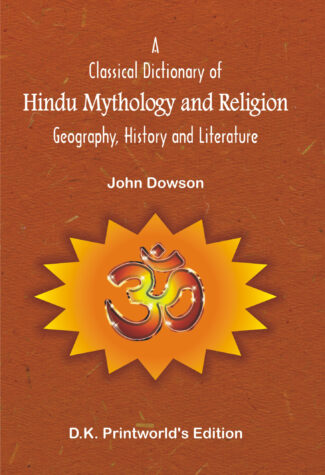
The Classical Dictionary encompassing the vast Hindu pantheon presents episodes, legends, literary works and geographical locales associated with Hindu religious beliefs. It is now offered in a fresh, state-of-the-art typeset incorporating standard diacritical marks.
Professor Dowsons Classical Dictionary of Hindu Mythology and Religion is now offered not only in a fresh format, but in a fresh, state-of-the-art typeset as well. Incorporated here, in addition, are standard, meticulously worked-out diacritical marks as rather mechanical aids in comprehending the transliteration of Indic sounds, more specially of the Sanskrit alphabet, into English. In its alphabetically arranged articles of varying lengths, the Dictionary tries to encompass the vast Hindu pantheon, in all its complexity and symbolic/metaphorical representations. Covering, thus, a whole mix of mythological characters: gods and demons, prajapatis and raksasas, it also presents explanatory accounts of important events/episodes, legends, literary works, and even geographical locales, associated with Hindu myths and religious beliefs. Acclaimed worldwide ever since its first appearance, the Dictionary sustains its essentially undiminishing appeal to the scholars and general readers seeking to discover for themselves the awesome world of Hindu mythology and the grand cosmogonic design it unveils.
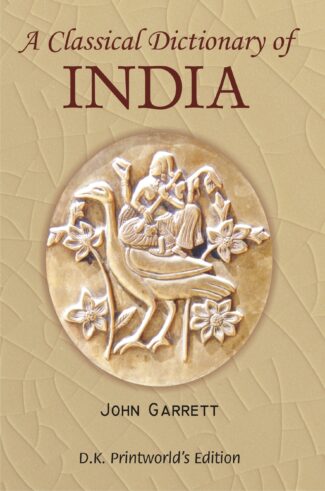
The work, now in a fresh format, is a storehouse of knowledge on Indian Mythology/antiquities Hindu deities and concepts, Buddhist theological terms, etc. It refers to authentic writings and their vast sources.
With lucidly-written accounts, of varying lengths, this Dictionary attempts to unfold all that anyone would want to know about Vedic/post-Vedic/classical India: its religions, mythology, pantheonic/legendary personages, schools of philosophy, sacred and secular texts, arts, antiquities, sciences, geography, rituals, customs, and the like; and, these besides, English equivalents/definitions of myriad Indic, largely Sanskrit, terms. For its sheer authenticity, the late John Garrett had drawn on a whole line-up of eminent Orientalists: from Max Muller to Monier Williams, form H.H. Wilson to John Muir. No wonder, the author, himself a celebrated scholar, invested over two-decade-long effort to compile this reliable, neatly exhaustive Classical Dictionary. For well over a hundred years, Garretts work has been recognized as a classic in its own right. Now reaching it out afresh to the present-day international scholarship, this edition has been recomposed in its entirely. And its lay-out as well has been improved in certain user-friendly ways. Also intoduced here, for the first time, are standard diacritical marks to help readers comprehend the transliteration of Indic sounds. As ever, it remains an unfailing companion of researchers, scholars and general readers, involved with Indological studies.

This dictionary serves as an immediate reference book to the teachers and the students of philosophy and also to the general readers. It covers as many as seventeen hundred entries that include the most commonly used philosophical terms of the East and the West and the brief biographies of prominent philosophers of the Orient as well as the Occident.
This dictionary serves as an immediate reference book to the teachers and the students of philosophy and also to the general readers. It covers as many as seventeen hundred entries that include the most commonly used philosophical terms of the East and the West and the brief biographies of prominent philosophers of the Orient as well as the Occident.

This dictionary serves as an immediate reference book to the teachers and the students of philosophy and also to the general readers. It covers as many as seventeen hundred entries that include the most commonly used philosophical terms of the East and the West and the brief biographies of prominent philosophers of the Orient as well as the Occident.
This dictionary serves as an immediate reference book to the teachers and the students of philosophy and also to the general readers. It covers as many as seventeen hundred entries that include the most commonly used philosophical terms of the East and the West and the brief biographies of prominent philosophers of the Orient as well as the Occident.
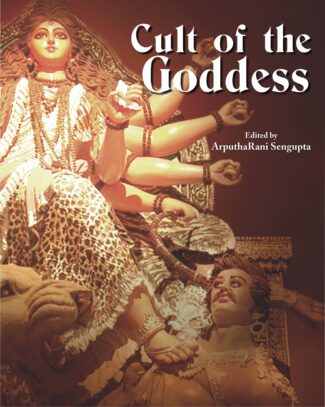
This book provides an unparalleled insight in exploring the Great Goddess as she lived and still lives in the psyche of India and in the Greater India, over a period of five millennia. It traces the origin and trajectory of the evolution of the divine feminine force in the visual discourse. This multilayered goddess cult finds its expression in great achievements in art and culture in manifold forms and roles.
This volume is comprised of forty-one well researched and illustrated papers on Cult of the Goddess. It tries to trace the origin and trajectory of the divine feminine force in art and culture for over a period of five millennia, which is a great achievement in itself. While exploring the living tradition of the Great Goddess, the book offers unique insight to the psyche of India and the Greater India.
In the multifaceted goddess cult, the goddess takes diverse forms in her role as a destroyer of demonic forces and a donor of boons to her devotees. The goddess is also the divine consort, creator of the universe, source of progeny, prosperity and immortality. In her numerous roles the goddess maintains the equilibrium and sanctity of the universe. In mythology, the Mother Goddess is worshipped as the earth, fish, snake, tree or the forest.
The book delves deep into the imagination and religious lives of the people to understand the meaning of rituals, philosophy and metaphysics. The enduring appeal of the goddess in folk traditions and in classic literary sources is discussed from various points of view. The span and the depth of research encompassing the goddess include the shifting changes in the present era and finds her manifestations in Bonabibi, Kadamkottu Makkam and Manushi Swaccha Narayani, in addition to the well-known concept of Parashakti, Lakshmi, Sarasvati, Durga, Mahishasuramardini, Prajnaparamita, Hathor, Isis and Mother Mary.
This richly illustrated volume on Cult of the Goddess is a rare and priceless collection for art historians, researchers, students, and others interested in art, culture and religion.

The book explores various facets of Indian social and cultural thought and life that make the country an attractive tourist site: its people, history, arts, food and drink, customs and lifestyle. It includes a variety of discussions and data on tourism: tourism-related organisations and conventions, eco-tourism and Indias wildlife scenario, for instance.
The book is a detailed exploration of various facets of Indian thought and life that make it a popular cultural tourist site for visitors from all over the world. It presents an account of Indias people, history, national flag and national anthem, dance, drama, music, painting, textile, pottery, food and drink, and customs and lifestyle that comprise the multifaceted components of Indias culture. It describes all the major places of pilgrimage and festivals and scenic beauty in India, and lists state-wise a number of historical cities and sites that stud the length and breadth of the country, its attractive monuments steeped in history and its museums laden with treasures from the past. It brings out the special attractions in India for the western tourist who is primarily interested in those aspects of Indian culture that give a deeper meaning to life at physical, spiritual, mental and moral levels. The work offers, for students of tourism, data on various aspects to cover their syllabus: national and international tourist flow, tourism-related organisations and conventions, eco-tourism, Indias natural heritage as, for instance, its wildlife. It also gives an account of historical evolution of tourism in the world context. For professionals in tourism, there is information on organisation of package tours, tour circuits, tour planning, training of guides and marketing of tourism. Appendices discuss institutions where tourism is taught, tourist information centres in India and abroad, and tourism related periodicals.

The book explores various facets of Indian social and cultural thought and life that make the country an attractive tourist site: its people, history, arts, food and drink, customs and lifestyle. It includes a variety of discussions and data on tourism: tourism-related organisations and conventions, eco-tourism and Indias wildlife scenario, for instance.
The book is a detailed exploration of various facets of Indian thought and life that make it a popular cultural tourist site for visitors from all over the world. It presents an account of Indias people, history, national flag and national anthem, dance, drama, music, painting, textile, pottery, food and drink, and customs and lifestyle that comprise the multifaceted components of Indias culture. It describes all the major places of pilgrimage and festivals and scenic beauty in India, and lists state-wise a number of historical cities and sites that stud the length and breadth of the country, its attractive monuments steeped in history and its museums laden with treasures from the past. It brings out the special attractions in India for the western tourist who is primarily interested in those aspects of Indian culture that give a deeper meaning to life at physical, spiritual, mental and moral levels. The work offers, for students of tourism, data on various aspects to cover their syllabus: national and international tourist flow, tourism-related organisations and conventions, eco-tourism, Indias natural heritage as, for instance, its wildlife. It also gives an account of historical evolution of tourism in the world context. For professionals in tourism, there is information on organisation of package tours, tour circuits, tour planning, training of guides and marketing of tourism. Appendices discuss institutions where tourism is taught, tourist information centres in India and abroad, and tourism related periodicals.
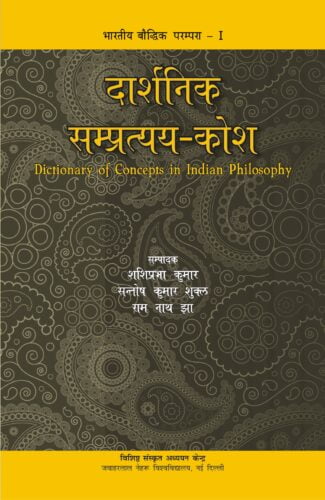
The present volume consists of a classical interpretation of important Indian philosophical concepts based on the original sources of each system thereof. Two hundred technical terms have been selected from significant schools/branches of Indian philosophy such as Veda, Mimamsa, Upanishads, Vedanta, Yoga, Samkhya, Vaisheshika, Nyaya, Jaina and Buddhism.
This encyclopaedic dictionary is one of its own kind in the sense that it is for the first time that a selection of original Indian philosophical concepts is done and the concepts are then explained by eminent scholars as per the Sanskrit texts of each school. There is no doubt that the dictionary will be useful for one and all: the inquisitive readers, researchers as well as the scholars of Indian Philosophy.
The present volume consists of a classical interpretation of important Indian philosophical concepts based on the original sources of each system thereof. Two hundred technical terms have been selected from significant schools/branches of Indian philosophy such as Veda, Mimamsa, Upanishads, Vedanta, Yoga, Samkhya, Vaisheshika, Nyaya, Jaina and Buddhism.
This encyclopaedic dictionary is one of its own kind in the sense that it is for the first time that a selection of original Indian philosophical concepts is done and the concepts are then explained by eminent scholars as per the Sanskrit texts of each school. There is no doubt that the dictionary will be useful for one and all: the inquisitive readers, researchers as well as the scholars of Indian Philosophy.
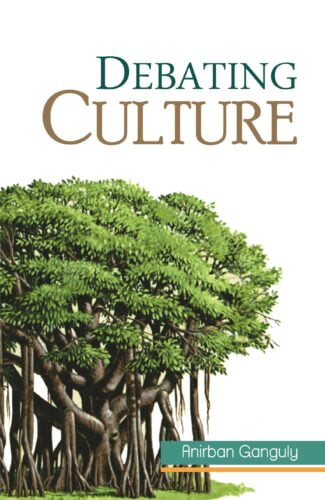
This book talks about the vision of our cultural thought-leaders like Ananda Coomaraswamy, Sri Aurobindo, Swami Vivekananda, Sister Nivedita, John Woodroffe, Syamaprasad Mookerjee and K.M. Munshi in making India a culturally strong nation. They remind us of our unique past and time-tested virtues and values, and the criticality of sustaining them while being modern in many ways
Barring the political agenda, the vital forces associated with India’s nationalist movement were moral, literary and artistic. Many cultural protagonists were vocal in saying that the regeneration of our society could happen through the revival of our arts and culture, not by politics and economics alone. This impulse was quite visible in cultural thought-leaders like Ananda Coomaraswamy, Sri Aurobindo, Swami Vivekananda, Sister Nivedita, John Woodroffe, Syamaprasad Mookerjee, K.M. Munshi and Jawaharlal Nehru. Rabindranath Tagore made a strong case for developing a complete and moving orb of Indian culture.
This book delves deep into the vision of these thought-leaders in making India a culturally strong nation, and warns us in different ways against becoming insularly modern. These personalities remind us of our unique past and time-tested virtues and values, and the criticality of sustaining them while being modern in many ways. They exult in our past and call upon us to be the torch-bearers of this legacy.
This volume, while doing an in-depth study of these Indian cultural activists, laments on the lackadaisical attitude of the leaders of Independent India in maintaining and promoting our art forms and long-revered culture. A renewed effort in rejuvenating our culture is the need of the hour, especially when its moorings seem to be loosening and its symbols diluting. It is an irony to call for the recognition of Indian culture in India!
| There are no products |